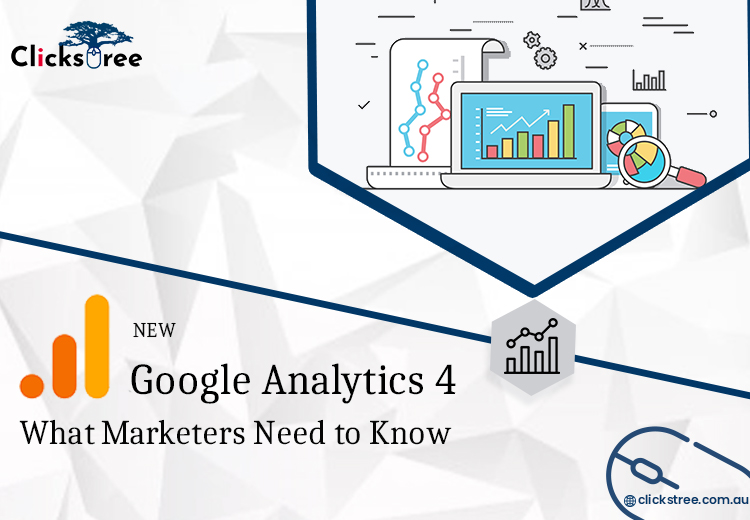
Do you want to improve your marketing research? Are you curious about how Google Analytics 4 will affect the way you track your marketing?
On the Social Media Marketing Podcast, I interviewed Chris Mercer on Google Analytics 4 and what it means for marketers.
Chris is the founder of MeasurementMarketing.io and the foremost authority on Google Analytics.
You’ll learn how Google Analytics 4 varies from Google Universal Analytics, how it can better track and measure the customer journey, and what types of analytics Google Analytics 4 can perform.
A few trends have evolved in recent years that make it more difficult for marketers to technically measure things the way they used to.
Cross-device behavior is the first of these patterns. People used to do all of their online work on a single computer. The purpose of analytics platforms is to track visits.
Individual users nowadays frequently utilize numerous devices to access the internet—desktop computers, laptop computers, and smartphones—and they frequently use one or more of those devices to fulfil a specific job, such as making a purchasing choice. They may conduct preliminary research on their phone before proceeding to a laptop to initiate and finalize the purchase. There hasn’t been a simple way to connect the dots for each user.
Data privacy is the second of these tendencies. Back when Facebook and other comparable services were free to use, the business strategy was to harvest user data and then resell it to others. The data was controlled by the platforms.
People now have more control over their data and what can be gathered, thanks in large part to GDPR, CCPA, and other comparable legislation. Even browsers like Chrome are no longer allowing third-party tracking cookies.
As a result, we have more gadgets to track the user’s trip but fewer capabilities to actually track it.
How Has Google Analytics Changed Over Time?
Urchin, an online statistics analysis software, was purchased by Google in 2005.
In 2012, Google Analytics evolved into Universal Analytics (the version most marketers are familiar with), and it began to measure sessions or visits rather than users.
Universal Analytics improved the platform over time by adding ID measuring, automatic subdomain monitoring, and simplified traffic attribution, among other features.
So, where do we go from here? Universal Analytics is based on a nearly two-decade-old software platform. It’s been enhanced, updated, and renovated, but it’s still the same platform with certain limitations. Platforms like Facebook, on the other hand, built their own analytics (such as Facebook Analytics) from the bottom up.
What Is Google Analytics 4 and How Does It Work? An Overview of the Situation
Browsers will block things as time goes on, people will use extensions to stop things, and even some websites will restrict things. Universal Analytics is limited to the data it can see (which is becoming increasingly difficult to obtain), and you must make judgments based on what is essentially sample data from a subset of your site’s users.
For example, in the safari preferences menu, check the boxes for ‘website tracking: prevent cross-site tracking,’ ‘cookies and website data: block all cookies,’ and ‘apple pay and apple card: allow websites to check for apple pay and apple card,’ as well as ‘apple pay and apple card: allow websites to check for apple pay and apple card.’
What’s the Difference Between Google Analytics 4 and Universal Analytics?
The most significant distinction between the two is how you obtain answers from the data.
Universal Analytics was created to collect data, store that data, and generate reports (such as the Source/Medium report) from that data. Inside Universal Analytics, everything happens.
Sample data for users, revenue, conversion rate, and sessions for the previous 7 days, active users right now, sessions by nation, and more are shown in this screenshot of the Google Universal Analytics main tab.
On the other hand, Google Analytics 4 is designed to store data for the Google measurement suite: Google Tag Manager, GA4, and Google Data are all Google products.
How to Use Google Analytics 4?
In the end, Google Analytics 4 is more of an analysis engine than a reporting tool. It’s not intuitive, and it’s not the simplest concept to grasp. You can undertake a deep-dive analysis to get your answers and take action if you go into it with questions you’re seeking to answer and you’ve already collected the information you need and it’s kept in a database with the correct structure.
The trick is to organize your information using a framework. What are the questions you’re attempting to answer? What information would you require to ensure that you receive those answers? What activities will you do as a result of the responses you receive?
The promise of GA4 is that without needing to engage a data scientist, marketers will be able to draw conclusions that lead to more accurate predictions. Chris, on the other hand, is suspicious by nature, and he worries how much data GA4 will require to provide such insights.
GA4 will need fewer data to start making more relevant assumptions as machine learning advances, according to his premise, because it will have access to a larger data set overall. GA4 may only need to observe a small portion of his site traffic to provide meaningful information, such as advising him to push a specific blog post since visitors are more likely to opt-in after reading it.
Marketers’ Most-Requested Features
So far, we’ve shown that GA4 offers some impressive new features that can assist marketers in delving deeper into website data and determining how their customers engage with the page. Our experts, on the other hand, shared which features they were most excited to use.
Artificial Intelligence Insights: Marketers have been embracing artificial intelligence to assist them to streamline their job and save time on repetitive chores. It’s a lot easier to acquire answers to particular inquiries using GA4’s AI features. “You can ask simple questions, and it will give you information on things like “What country had the most visitors to our home page at 4 p.m.?”
Customer Lifecycle:
Knowing where customers are in their buyer’s journey is crucial for marketers who want to make sure they’re getting the greatest content at the appropriate time, and GA4 helps them do just that. It’s possible to see where consumers are in the funnel with lifecycle reports, which are significantly more granular than behavior reports. “When we see the same visitors digging deeper into our blogs, we may create “cards” that encourage email development instead of scheduling a sales call,” Liantonio explained.
Customer Churn and Future Actions:
Predicting customer behavior is critical for planning future marketing campaigns, product releases, and other initiatives. It’s also important for determining where to concentrate marketing efforts. According to Shah, Google Analytics 4 can “predict the future action that a consumer may take,” and “we can efficiently invest in retaining customers with the assistance of this new functionality to compute churn likelihood.”
Conclusion
Marketers can improve their decision-making process and respond to client interactions more rapidly with better insights. There’s a lot more to Google Analytics 4, but it seems like marketers are already drooling at the possibilities.


